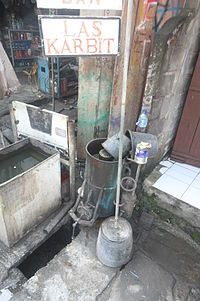Mark, your posting puzzles me. I do not want to start a long running argument, but am really puzzled.
Admittedly, my knowledge of organic Chemistry stopped at Scholarship, or Inter BsC level.
As far as I know, Acetylene (CH2) is the simplest hydrocarbon.
Oxidising the Hydrogen will produce water, (Maybe a tiny amount of Deuterium – but of minimal interest, unless you wish to moderate a nuclear reaction)
Oxidising the Carbon with a full supply of Oxygen will produce Carbon Dioxide (CO2)which will not support mammalian life.
Restricted Oxygen supply results in Carbon Monoxide (CO) which is poisonous. the mechanism is that it combines with the haemoglobin in the blood to form Carboxyhaemoglobin, which is stable.
On the other hand, Oxygen combines to form Oxyhaemoglobin, which is unstable. This feature allows the blood to transport Oxygen to the lungs, and to other parts of the body which need Oxygen to function.
(The mammal body is basically an internal combustion system By oxidising the hydrocarbon food intake, energy is produced, with Water and Carbon Dioxide as waste products. Don't ask about the Sulphur content!)
So what did I get wrong?
As an aside, the Acetylene produced by dripping water onto commercially available Calcium Carbide is likely to be quite impure.
Machines can be powered by an external engine, via lineshafting, or locally produced electricity; or even by treadle power. A lot of early Drummonds were powered this way!
I am sure that many posters and readers on the Forum will advise against combustion heaters IN the workshop, for the reasons already set out. If you are a Health and Safety addict, leakage of flue gases could prove fatal.
Howard
Ian S C.





